Ghost towns stand as haunting reminders of human ambition, economic booms, and the inevitable cycles of rise and decline that shape civilization. These abandoned settlements tell stories of dreams pursued and fortunes lost, preserving fragments of daily life frozen in time when prosperity vanished and residents moved on to chase new opportunities elsewhere.
Here is a list of 20 ghost towns with fascinating past lives, each revealing remarkable chapters of human history through their abandoned streets and crumbling buildings.
Bodie

California’s most famous ghost town once housed 10,000 residents during the 1870s gold rush, transforming from a rough mining camp into a thriving city complete with hotels, saloons, and a notorious red-light district. The town earned a reputation for lawlessness, with shootings and bar fights occurring so frequently that local newspapers struggled to cover all the violence.
When the gold ran out in the 1940s, residents simply walked away, leaving behind perfectly preserved buildings filled with furniture, dishes, and personal belongings that create an eerie time capsule of American frontier life.
Pripyat
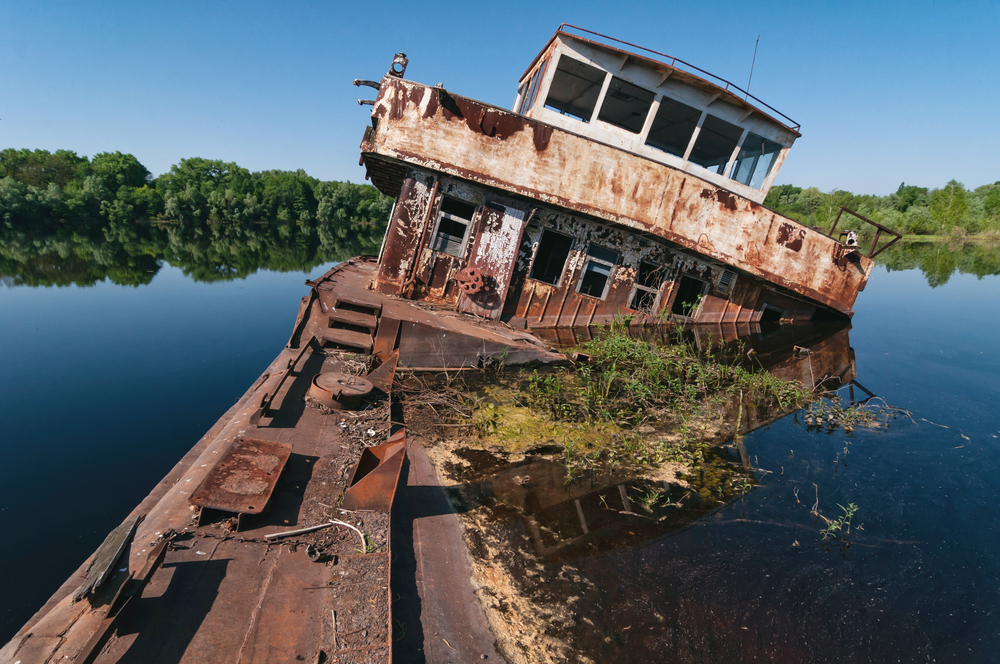
Ukraine’s modern ghost town was evacuated in 1986 following the Chernobyl nuclear disaster, leaving behind a Soviet city frozen at the height of the 1980s life with amusement parks, schools, and apartments abandoned in mid-use. The city had been a model Soviet community, boasting modern amenities, well-planned neighborhoods, and a population of nearly 50,000 people who enjoyed a higher standard of living than most citizens of the USSR.
Today, nature slowly reclaims the concrete buildings while radiation levels make permanent human habitation impossible, creating a post-apocalyptic landscape that attracts dark tourism from around the world.
Like Travel Pug’s content? Follow us on MSN.
Hashima Island

Japan’s concrete island city housed coal miners and their families in high-rise apartment buildings, making it one of the world’s most densely populated places during its 1960s peak. The artificial island featured schools, hospitals, shops, and recreational facilities, creating a self-contained community where residents rarely needed to visit mainland Japan.
When petroleum replaced coal as Japan’s primary energy source, the island was abandoned overnight in 1974, leaving behind a concrete jungle that inspired the villain’s lair in the James Bond film, “Skyfall”.
Kolmanskop

Namibia’s diamond boomtown emerged from the desert in 1908 when a railway worker discovered diamonds in the sand, attracting fortune seekers who built a German-style town complete with a hospital, ballroom, and ice factory. The town prospered for decades as one of the world’s richest diamond mining operations, boasting amenities such as the first X-ray machine in the Southern Hemisphere and elaborate homes adorned with German furniture and crystal chandeliers.
When richer diamond deposits were discovered elsewhere in the 1950s, the desert began reclaiming the abandoned buildings, creating surreal scenes of rooms filled with dunes reaching up to the ceilings.
Centralia
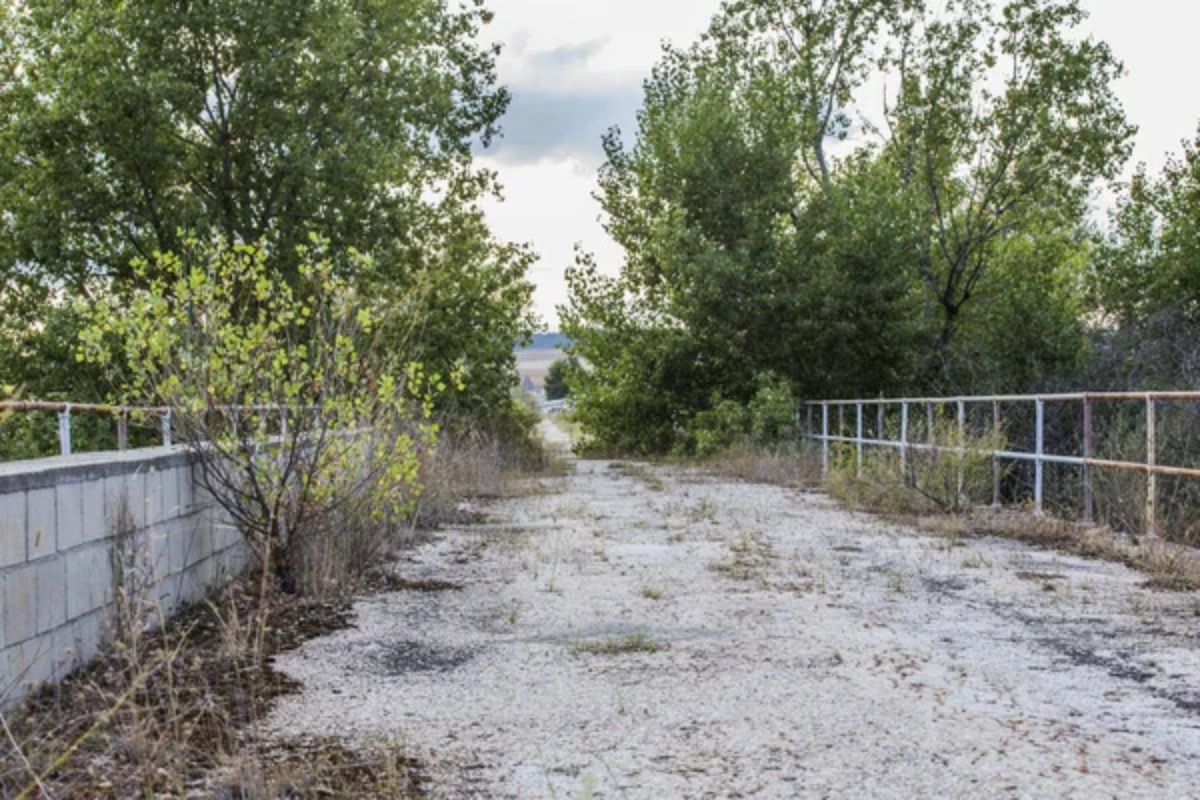
Pennsylvania’s underground coal fire has been burning since 1962, forcing residents to abandon their town as toxic gases seep through the ground and dangerous sinkholes open without warning. The town once housed over 2,000 people in a thriving coal mining community with schools, churches, and local businesses that served the region for over a century.
Today, only a few stubborn residents remain among the empty streets where steam rises from cracks in the pavement and the ground temperature can reach 200 degrees Fahrenheit, inspiring the setting for the Silent Hill horror movie franchise.
Like Travel Pug’s content? Follow us on MSN.
Calico
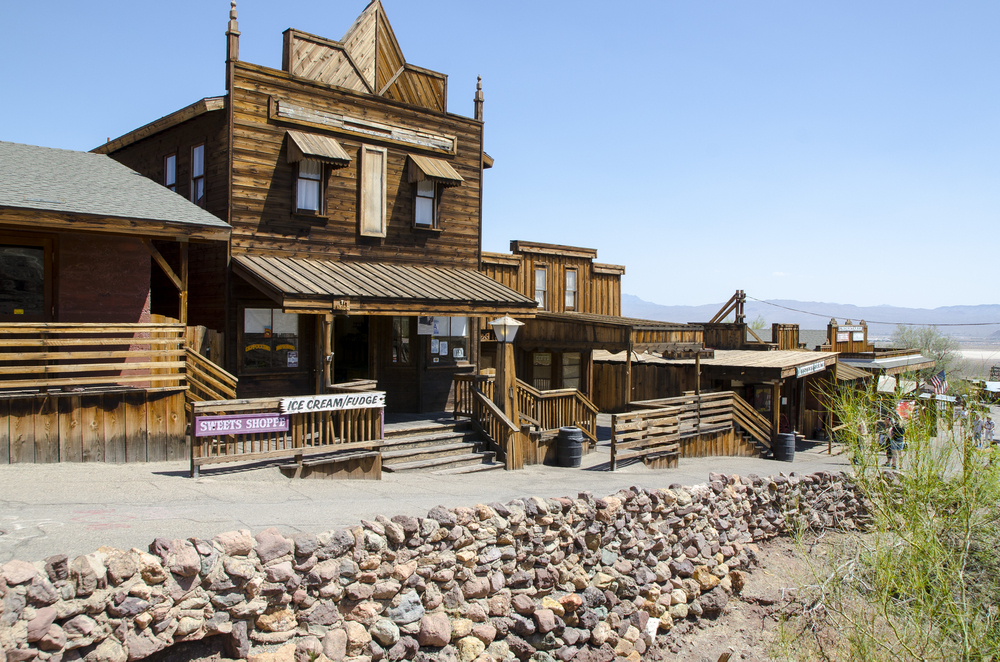
California’s silver mining town boomed in the 1880s with over 500 mines producing millions of dollars in silver ore, supporting a population of 3,000 residents who built schools, shops, and even an opera house. The town featured modern amenities for its time, including telephone service, daily mail delivery, and a narrow-gauge railroad that connected it to the outside world.
When silver prices collapsed in the 1890s, the town died almost overnight, leaving behind well-preserved buildings that were later restored as a tourist attraction showcasing authentic Wild West architecture and mining equipment.
Kayaköy

Turkey’s abandoned Greek Orthodox village stands as a monument to the population exchanges that followed World War I, when political agreements forced entire communities to abandon their ancestral homes. The town once housed over 6,000 Greek Orthodox Christians who had lived there for centuries, building elaborate stone houses, churches, and schools that reflected their prosperous trading economy.
After the 1923 population exchange between Greece and Turkey, the entire Christian population was forced to relocate to Greece, leaving behind a perfectly preserved Byzantine village that now attracts visitors interested in this tragic chapter of Mediterranean history.
Craco

Italy’s medieval hilltop town was gradually abandoned throughout the 20th century due to recurring landslides, earthquakes, and war, which made the ancient settlement increasingly dangerous for its residents. The town dates back to 1060 and once housed noble families in elaborate palaces while common residents lived in houses carved directly into the clifftop rock formation.
By 1980, the last residents had moved to safer locations, leaving behind a perfectly preserved medieval town that has become a popular filming location for movies seeking authentic ancient Italian settings.
Like Travel Pug’s content? Follow us on MSN.
Oradour-sur-Glane

France preserves this village exactly as it was left after German forces massacred 642 residents in 1944, creating a powerful memorial to wartime atrocities that serves as both a ghost town and a historical monument. The village had been a quiet agricultural community where residents lived peaceful lives until the afternoon when German troops surrounded the town and systematically killed nearly everyone.
President Charles de Gaulle ordered the ruins to be preserved as a permanent reminder of the war’s horrors, making it one of the few ghost towns intentionally maintained in its abandoned state.
Grytviken
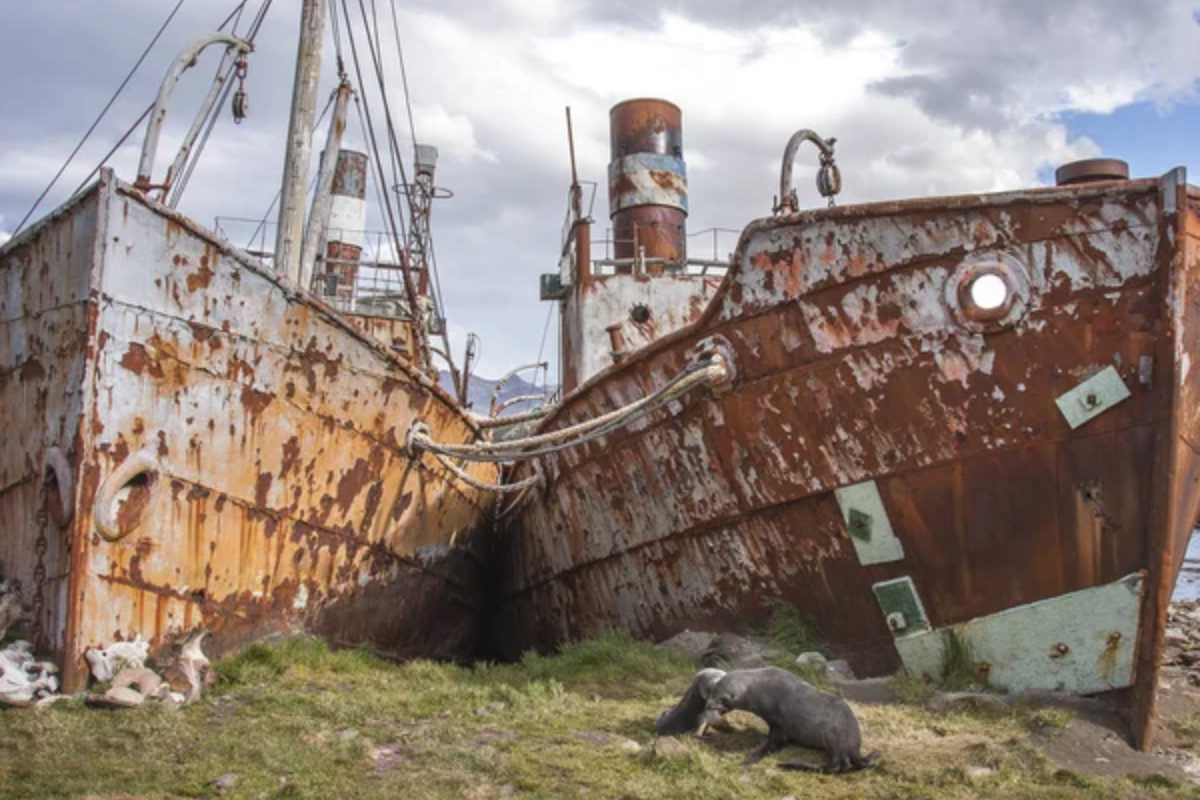
Antarctica’s abandoned whaling station processed thousands of whales during the early 20th century, when industrial whaling operations brought hundreds of workers to this remote South Georgia Island outpost. The station featured a church, hospital, cinema, and residential buildings, creating a small Norwegian community in one of Earth’s most isolated locations.
When commercial whaling ended in the 1960s, the station was abandoned, leaving behind rusting machinery, wooden buildings, and the grave of explorer Ernest Shackleton, who died there in 1922 during his final Antarctic expedition.
Rhyolite

Nevada’s short-lived boomtown grew from nothing to 5,000 residents in just two years during a 1904 gold rush, featuring electric lights, concrete sidewalks, and even an opera house that rivaled those in major cities. The town attracted investors who built elaborate Victorian homes, a stock exchange, and the famous bottle house constructed entirely from discarded liquor containers.
When the gold ore proved less valuable than expected, the town collapsed as quickly as it had risen, leaving behind concrete ruins and the bottle house that still stands as a testament to frontier optimism and excess.
Like Travel Pug’s content? Follow us on MSN.
Humberstone
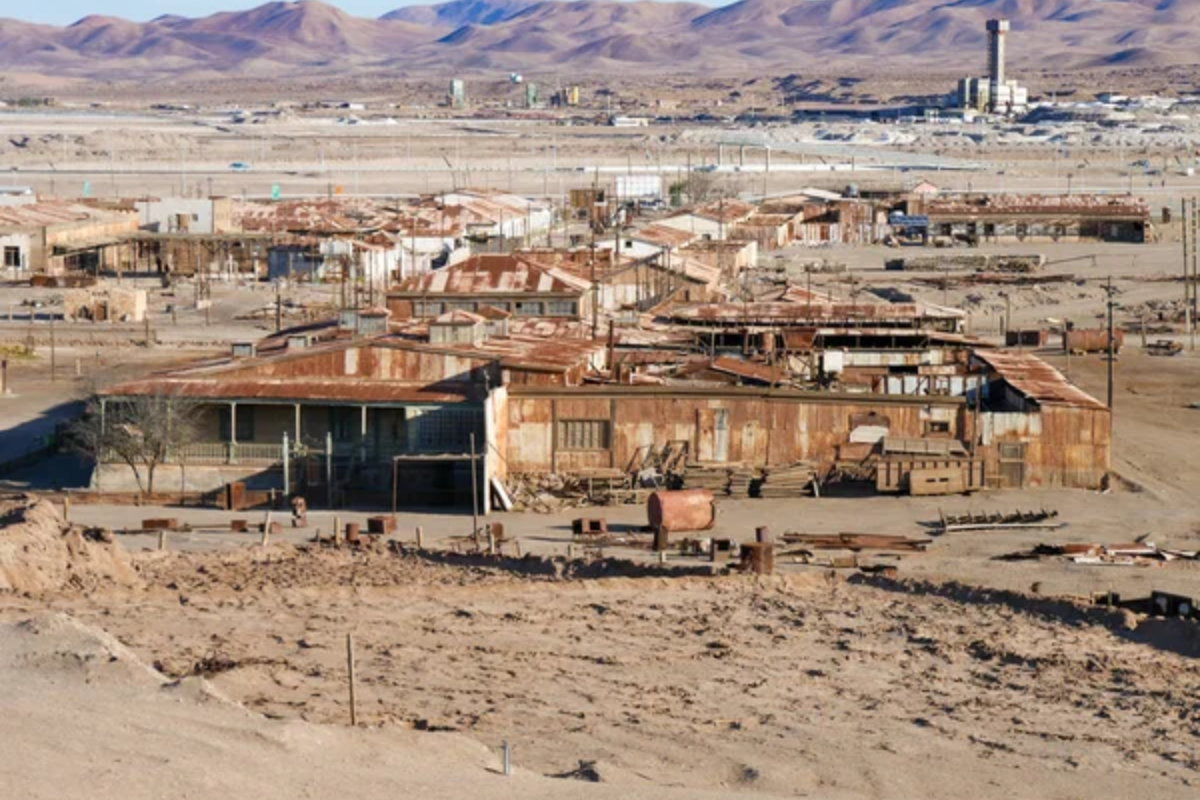
Chile’s nitrate mining town housed thousands of workers who extracted saltpeter from the Atacama Desert during the early 20th century, when natural nitrates were essential for fertilizer and explosives. The company town featured a theater, swimming pool, hotel, and residential neighborhoods, creating a complete community in one of the world’s most arid environments.
When synthetic nitrates replaced natural ones during the 1940s, the entire industry collapsed overnight, leaving this well-preserved company town to serve as a UNESCO World Heritage site showcasing its industrial history.
Wittenoom
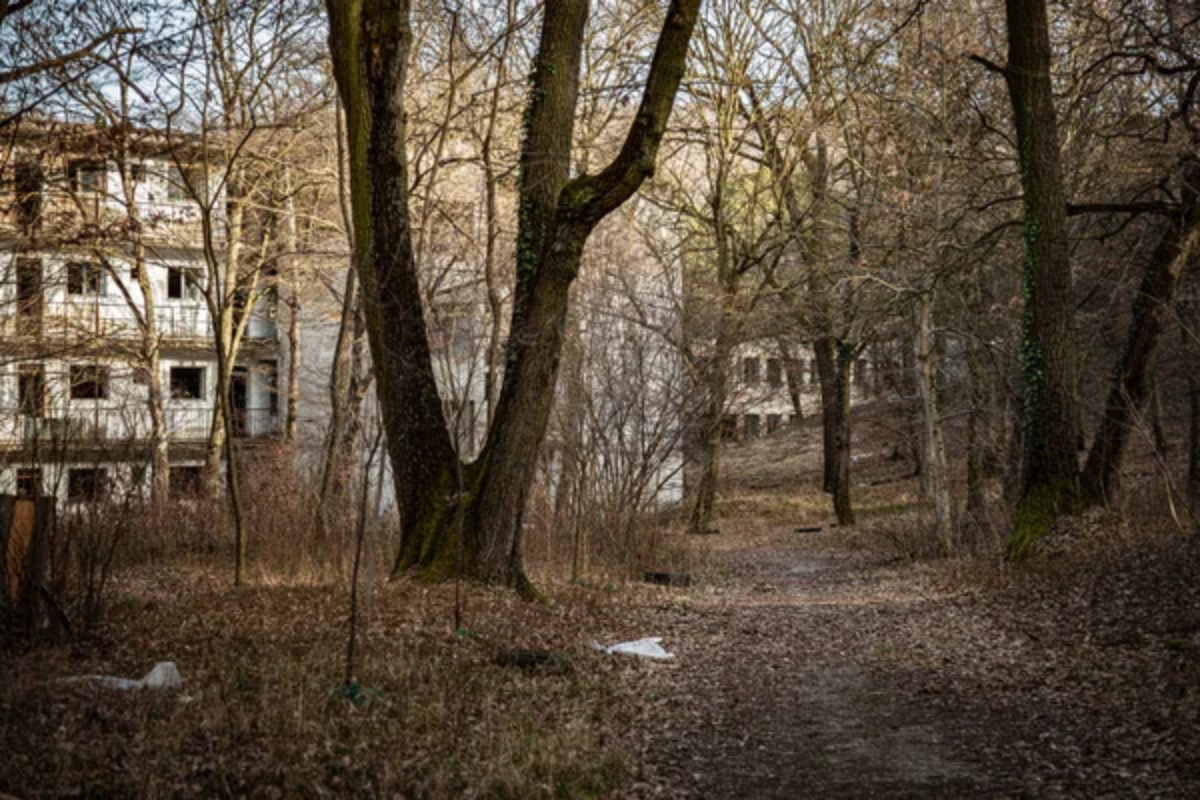
Australia’s former asbestos mining town was gradually abandoned as residents developed mesothelioma and other respiratory diseases from exposure to the deadly mineral fibers. The town once housed families who worked for the asbestos mine during the 1940s and 1950s, building schools, shops, and recreational facilities in the remote Pilbara region.
Government health warnings eventually led to the evacuation of the remaining residents, making Wittenoom one of the few towns abandoned solely due to environmental health hazards, rather than economic factors.
Fordlândia
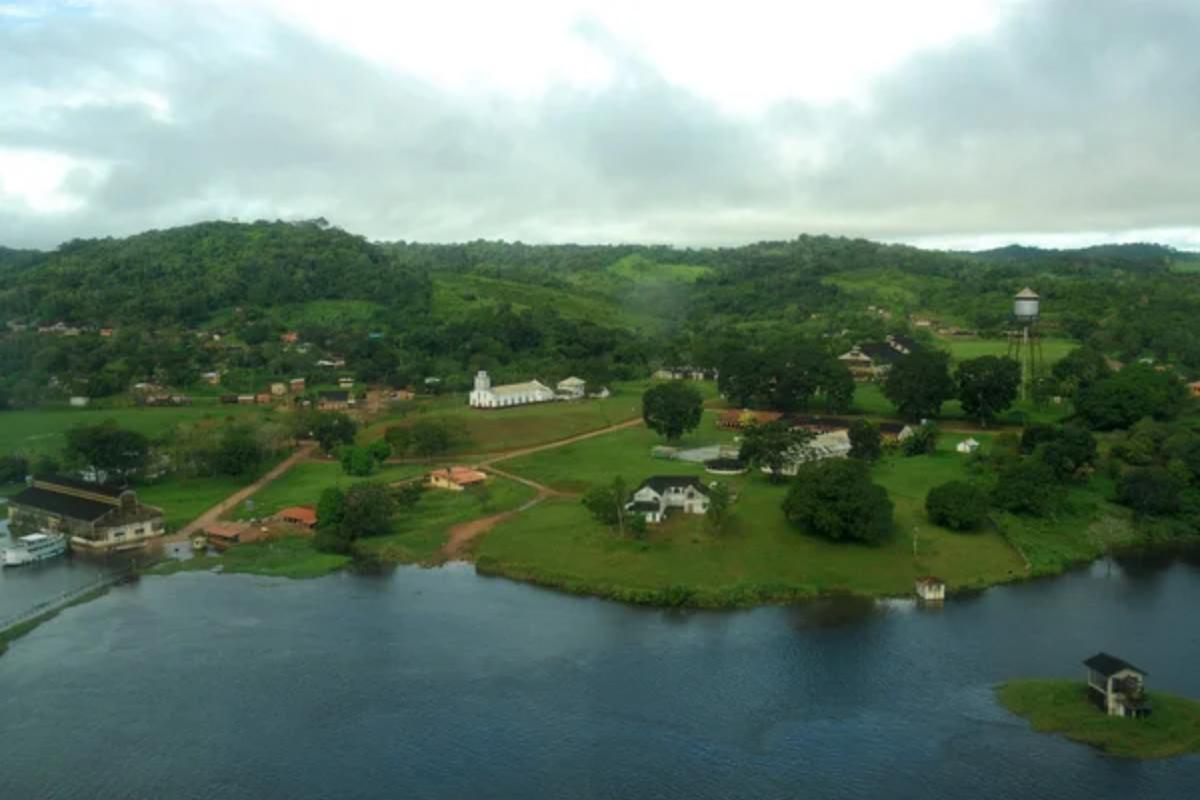
Brazil’s abandoned rubber plantation represents Henry Ford’s failed attempt to create an American-style town in the Amazon rainforest, complete with suburban houses, golf courses, and the prohibition of alcohol, among other restrictions. Ford invested millions of dollars in the 1920s trying to grow rubber trees and create a model community that would supply tires for his automobile factories.
The project failed due to plant diseases, worker rebellions, and Ford’s insistence on imposing American cultural values on Brazilian workers, leaving behind a surreal collection of Midwest American architecture slowly being consumed by jungle vegetation.
Like Travel Pug’s content? Follow us on MSN.
Thurmond

West Virginia’s railroad town once bustled with coal trains and passenger service that made it a crucial transportation hub in the early 1900s, supporting hotels, shops, and a thriving commercial district. The town’s strategic location along the New River made it essential for coal transportation, attracting businesses and residents who depended on the railroad for their livelihoods.
When coal mining declined and railroad traffic shifted to other routes, the town’s population dwindled to just five residents, leaving behind well-preserved buildings that showcase early 20th-century railroad architecture.
Garnet
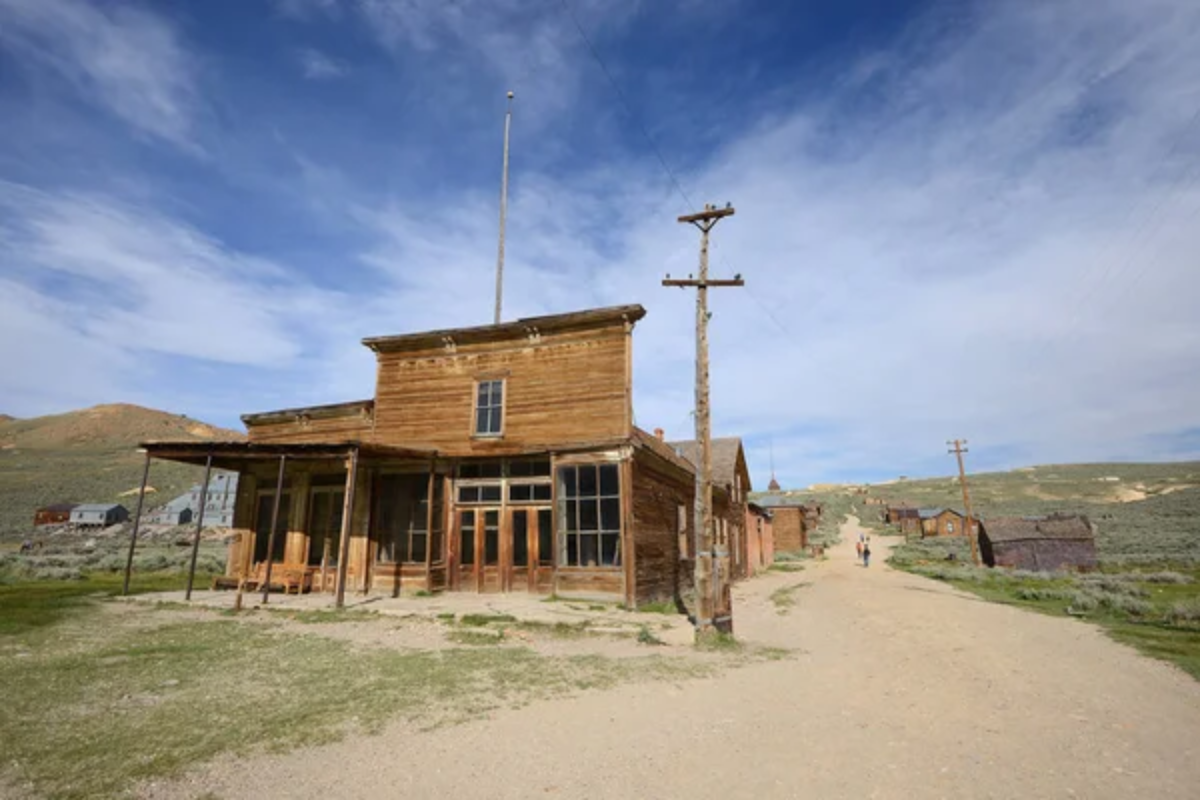
Montana’s gold mining town flourished during the 1890s, with over 1,000 residents building schools, saloons, and hotels in the remote mountains east of Missoula. The town featured typical frontier amenities, including a hotel, general store, and numerous saloons that catered to miners and loggers working in the surrounding wilderness.
When gold production declined and better opportunities emerged elsewhere, residents gradually abandoned the town, leaving behind one of Montana’s best-preserved ghost towns with original buildings and mining equipment still intact.
Kennecott

Alaska’s copper mining town operated in extreme isolation, surrounded by glaciers and mountains, where workers endured harsh conditions to extract high-grade copper ore during the early 1900s. The remote location required complete self-sufficiency, leading to the construction of a hospital, school, recreation hall, and residential buildings that housed families year-round in sub-Arctic conditions.
When copper prices fell and high transportation costs made the operation unprofitable, the entire community was abandoned in 1938, leaving behind a remarkably preserved example of early 20th-century industrial architecture in pristine wilderness.
Like Travel Pug’s content? Follow us on MSN.
Goldfield
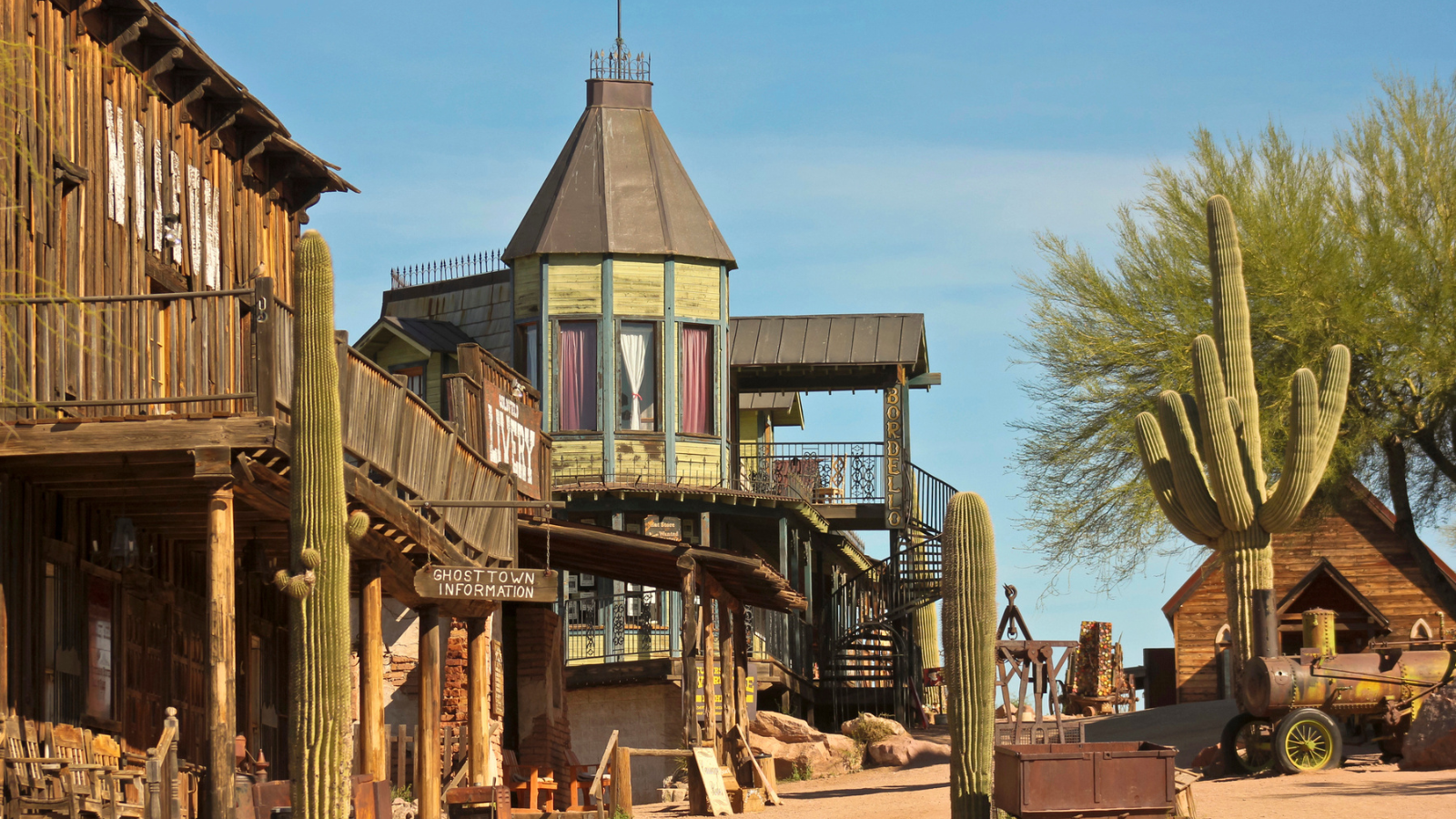
Nevada’s largest gold rush town housed over 30,000 residents during its 1900s peak, featuring electric streetcars, telephone service, and elaborate hotels that rivaled those in San Francisco and New York. The town attracted wealthy investors and working-class miners alike, creating a diverse community that included opera houses, newspapers, and even automobile dealerships in the midst of the Nevada desert.
Labor disputes, mine closures, and a devastating fire in 1923 led to a rapid decline in population, leaving behind concrete foundations and scattered ruins that mark what was once Nevada’s largest city.
St. Elmo
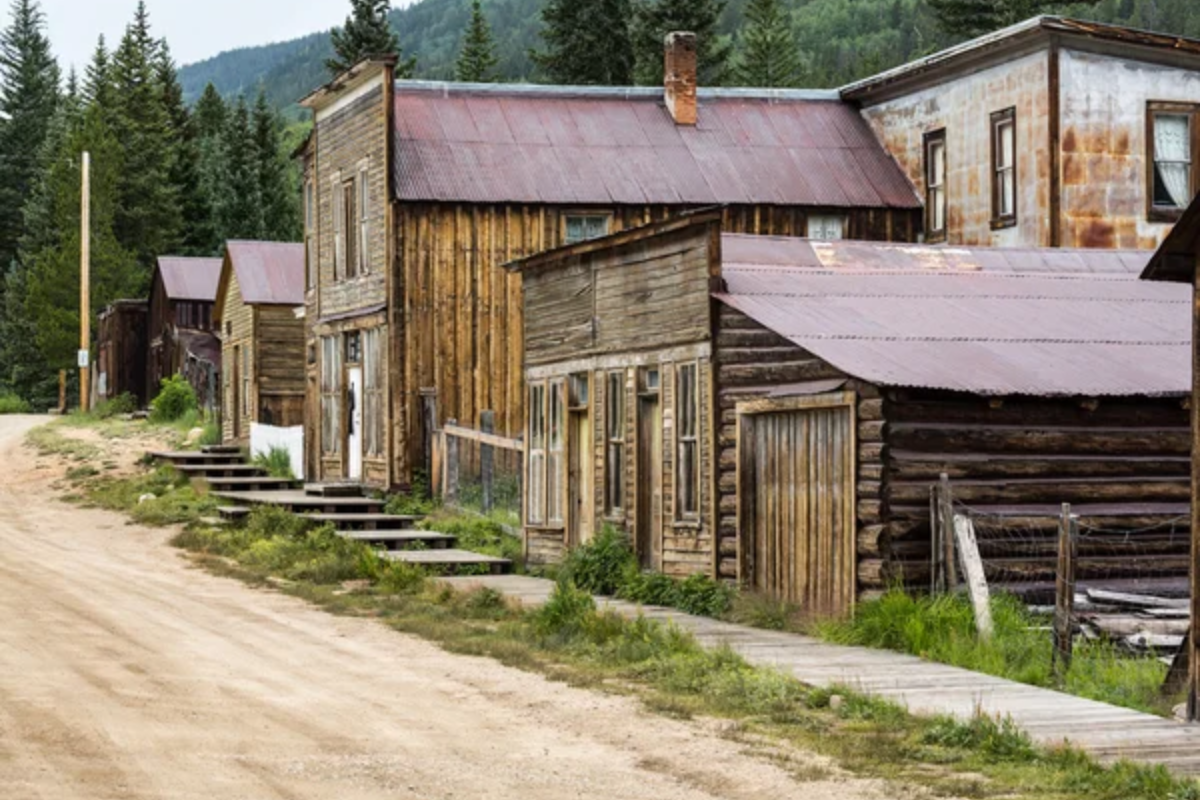
Colorado’s high-altitude mining town sits at 10,000 feet elevation, where residents endured harsh winters and short growing seasons to extract gold and silver from surrounding mountains. The city featured typical mining community amenities, including a hotel, general store, and telegraph office, which connected it to the outside world despite its remote mountain location.
When mining became unprofitable and railroad service ended, the town was gradually abandoned. However, several buildings remain well-preserved due to the dry mountain climate and dedicated caretakers who maintain the historic structures.
Terlingua
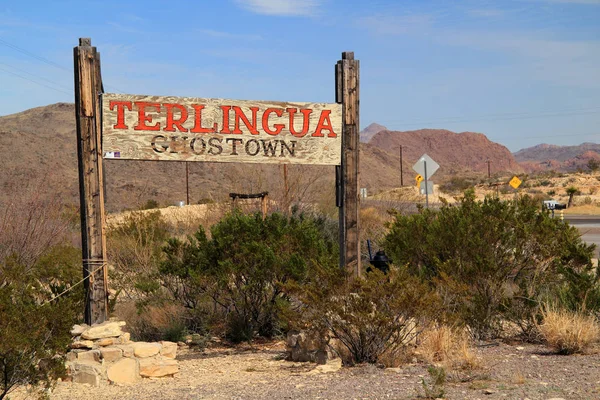
Texas’s mercury mining town once supplied quicksilver (mercury) essential for gold and silver processing, supporting a multicultural community of Mexican, European-American, and Native American workers in the remote Big Bend region. The company town featured a company store, school, and residential areas that housed families working for the Chisos Mining Company during the early 1900s.
When mercury demand declined and health concerns about mercury exposure grew, the town was abandoned, leaving behind adobe ruins and mining equipment that now attract visitors exploring Big Bend National Park.
Like Travel Pug’s content? Follow us on MSN.
Echoes of Abandoned Dreams

These remarkable ghost towns preserve fragments of human ambition and adaptation, illustrating how communities rise and fall in response to economic opportunities, environmental challenges, and historical circumstances beyond individual control. Each abandoned settlement represents thousands of personal stories—families who built lives in remote locations, entrepreneurs who risked everything on uncertain ventures, and workers who endured hardship in pursuit of dreams of prosperity.
The preservation of these towns, whether intentional or accidental, provides invaluable insights into how humans adapt to challenging environments and create communities under the most unlikely circumstances. Their abandoned streets and empty buildings remind us that all human settlements exist in delicate balance with economic, environmental, and social forces that can transform thriving communities into historical curiosities in remarkably short periods
More from Travel Pug

- 20 Best Beach Towns in the Carolinas
- 13 Destinations Where Tourists Regularly Regret Their Trip
- 20 Destinations That Are More Magical Without an Itinerary
- 20 Underrated Adventures That Belong on Your Travel List
- 20 Cities Where You Should Just Wing It, No Planning Required
Like Travel Pug’s content? Follow us on MSN.N.
